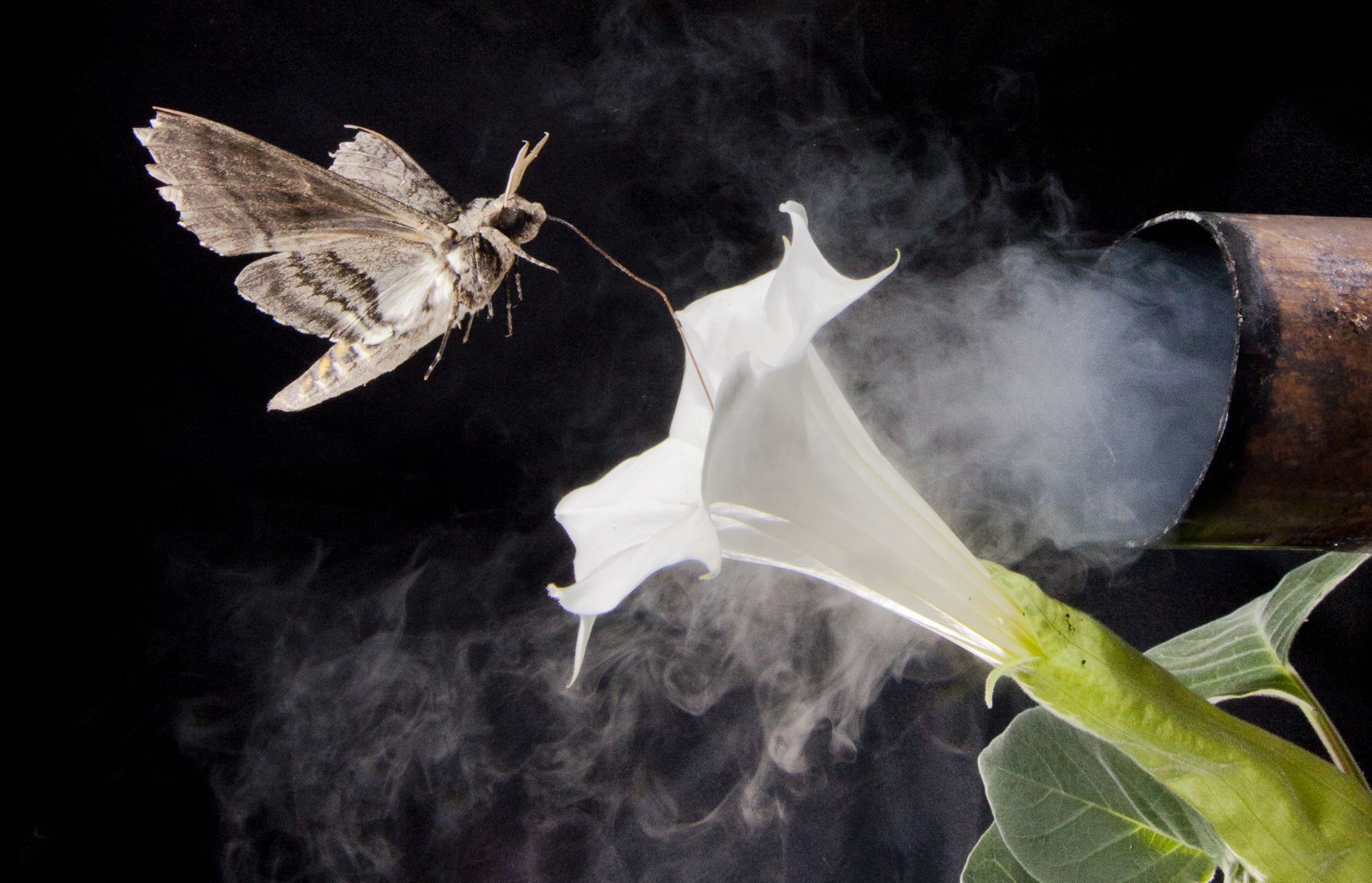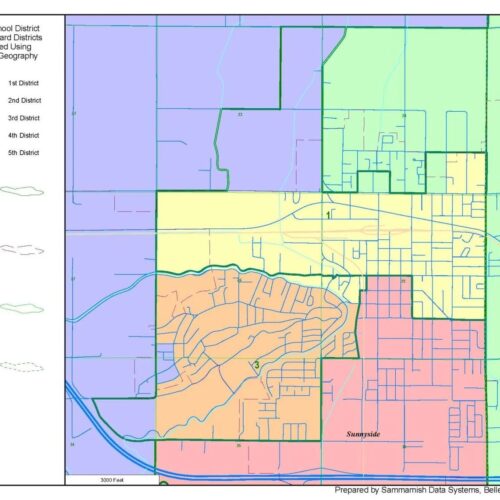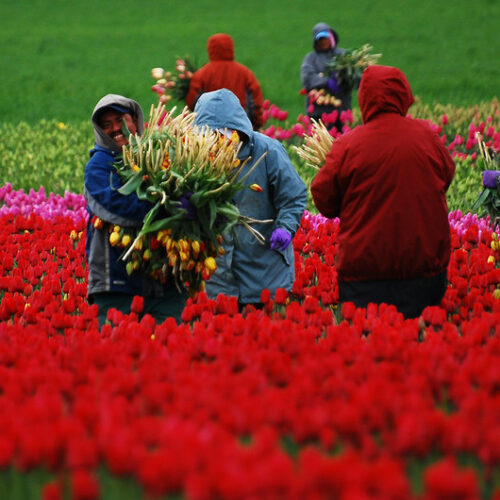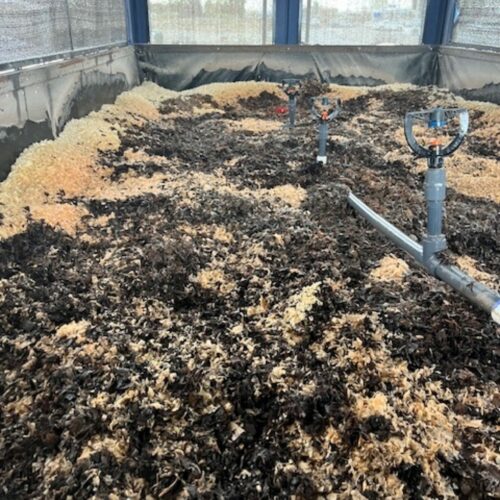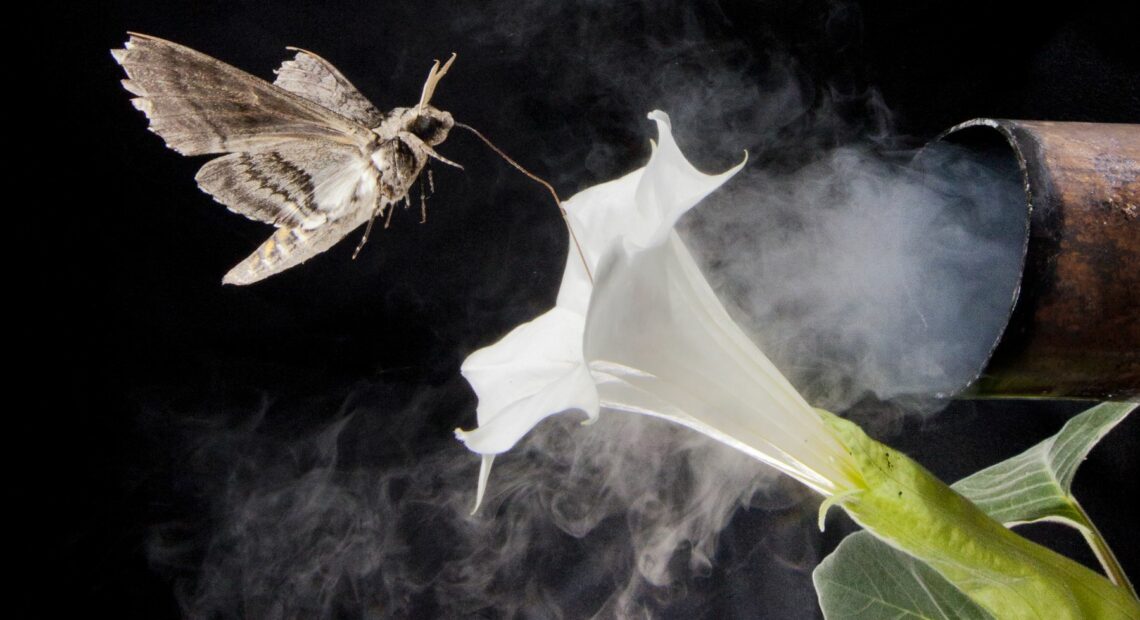
Pollution causing problems for nighttime pollinators
Listen
(Runtime 1:03)
Read
You might not know it, but some moths can smell just as well as dogs. The nighttime insects use their antennae to sniff out flowers heavy with pollen up to a mile away. New research from the University of Washington shows pollution in car exhaust can blunt the flowers’ scent – making it hard for pollinators to find the blossoms.
“When you’re flying around at night, your vision is not going to be that helpful. So the moths are primarily using their sense of smell to find mates, find food,” said Jeff Riffell, a biology professor at UW.
In lab and field experiments, the scientists tested how well the white-lined sphinx moths and the tobacco hawkmoths could smell the strong bouquet of scents given off by the pale evening primrose, especially when the compounds from the flower’s scent came into contact with nitrate radicals. Nitrate radicals are most often produced by the combustion of gas and coal.
“These pollutants that we’re producing are really reactive, really present (at night), and are actually playing a really critical role in degrading the sense that the moths are using to locate their food sources or their flowers,” Riffell said.
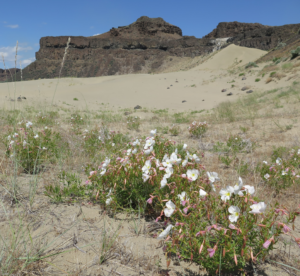
Pale evening primrose patches near Quincy, Wash. (Credit: Jeremy Chan / University of Washington)
The pale evening primrose blooms in small clusters at night in Eastern Washington, perfect for two species of moths out sniffing for midnight snacks.
However, nighttime atmospheric forces at play make that search difficult. Researchers discovered within minutes compounds from car exhaust bind to particles in the flower’s scent bouquet.
Other studies have found specific atmospheric chemistry reacts differently during the day but that sort of chemistry is understudied at night, said Joel Thornton, a UW professor of atmospheric sciences.
“During the daytime, the sun’s out in the sun breaking chemical bonds and that causes all sorts of reactions to take place,” Thornton said. “ At night, there are other chemical compounds that are formed related to pollution.”
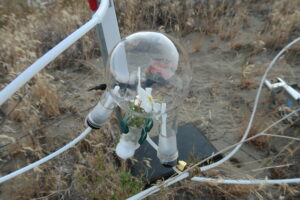
Scientists capture the scent of a pale evening primrose in Eastern Washington. (Credit: Jeremy Chan / University of Washington)
To conduct the experiments, the researchers first collected the flowers’ scent in the field. They placed a bag over the flower, which continually emits scent, and then drew a sample of the air with materials that make the scent vapors stay put.
“The flowers have a very intense smell, kind of bright and sort of sweet,” Thornton said.
Then, they took it to the lab, where they found more than 60 different components that made up the pale evening primrose’s scent. They created a synthetic floral scent.
“(The moths were) attracted to this synthetic scent and landed at the same level that they were attracted to the authentic floral scent,” Thornton said.
Then, they added in the nitrate radicals. They blunted the smell within minutes, Riffell said.
“Even (people) can perceive that loss of freshness,” Riffell said of the less fragrant smell in the lab.
After that, it was like the moths couldn’t find the flowers, he said. They found an up to 70% decrease in the times moths visited flowers after the nitrate radicals bound themselves to a specific, important compound in the flower’s scent called monoterpenes.
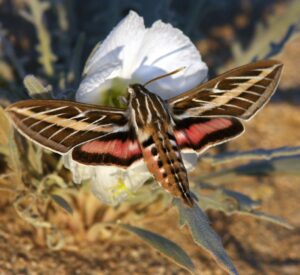
A a white-lined sphinx pollinates a pale evening primrose flower. (Credit: Ron Wolf / University of Washington)
These compounds are common and play an important role in a variety of ecosystems, Thornton said.
“They’re ubiquitous in terms of being detected by a range of pollinators and pests systems,” he said.
All of the compounds reacted similarly in studies outside Quincy, Wash., researchers found. That could harm pollination and the moth’s ability to find food. Moreover, Riffell said, the same thing could be happening elsewhere not just in the arid Washington desert.
“We think this type of problem is impacting many areas of the U.S. We think this is actually a global problem,” Riffell said.
Still, there is some good news.
The uptick in electric vehicles and pollution controls at factories have lessened this sort of pollution, which could one day help pollinators, Thornton said.
“Things are getting better around the globe,” he said. “There’s still a ways to go but if we continue replacing electricity production with non-combustion sources like solar, wind and hydro, and use that to power electric vehicles, major human sources of nitrogen oxides will have come down dramatically.”
The research was published in the journal Science.

